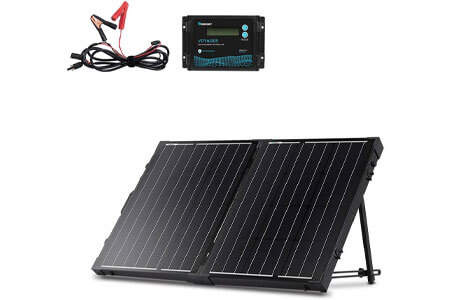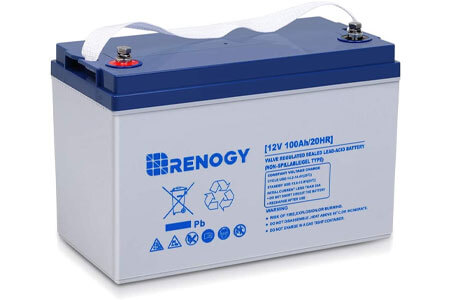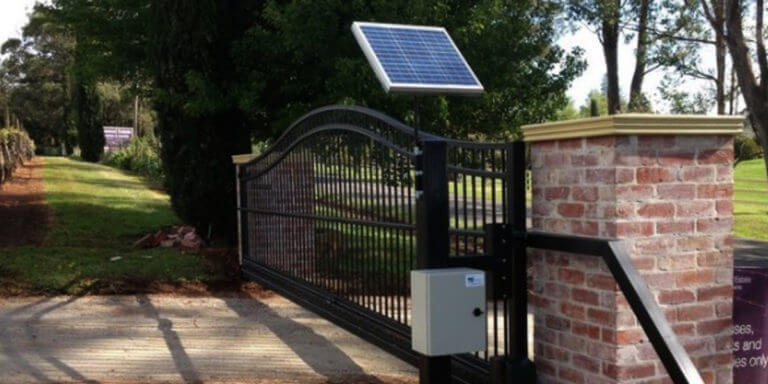Complete Guide On Solar Powered Computers

Computers are the need of the hour. Right from households to government offices, everything is incomplete without computers.
Every sector of society largely depends on computers for effective execution. This is because a computer provides a feasible alternative to storing data on drives and saves the hassle of maintaining every piece of information on paper. As technology evolves rapidly, so do computers.
From having a big box monitor to an LCD, we all have come a long way. However, electricity continues to remain a concern in significant parts of the world. Similarly, as computing evolves by the minute, it drastically adds to our utility bills.
On average, computers run for almost 8 hours a day. As a result, it consumes a large amount of electricity. At times, you will need to keep your system on for 24 hours.
However, solar computing can help you significantly cut down your utility bills. In addition to saving electricity costs, solar computing enables you uninterrupted power. This is because solar energy thrives on direct sunlight.
Over the years, solar-powered computing has emerged as a reliable and efficient way of execution, especially in areas suffering from significant electricity cuts. As long as your solar panel sits under direct sunlight, you will be able to enjoy an uninterrupted power supply to your computer.
In this article, we have listed the complete guide to solar-powered computing. Also, we have listed the steps to install a solar-powered computer. In addition, we have also compiled a list of the best solar panels and solar panel batteries (Generators) that are currently available in the market.
Can You Run A Computer Using Solar Power?
Yes, you can run a computer using solar power. Nowadays, it is possible to power a majority of appliances using solar energy.
Running your computer using solar power or using your laptop using a solar charger is an excellent way of taking your work everywhere you go. This is because a solar-powered computer harnesses the power of the sun and dials down on your electricity usage, in turn reducing your utility bills.
The solar panels absorb the sun’s energy and store it in a battery as a direct current (DC). The battery then converts this DC into AC and then supplies it to your computer. With the help of solar panels, you can run your computer for at least 7 hours on a single charge.
Can You Run A Laptop Using Solar Power?
Yes, you can power a laptop using solar energy. For this, you need a solar charger that harnesses all the green energy from the sun. A laptop consumes comparatively less power than a desktop and is an easier way of carrying your workaround with you.
There are two ways using which you can power your laptop using solar energy.
1. Purchase a solar laptop charger and connecting this charger with the installed solar panel (system)
Since a laptop uses approximately 60Wh, you will need to install additional solar panels to power your laptop.
2. Purchasing a laptop that runs directly on solar power
The latest technology allows many laptops to run directly under the sun’s power. However, there are very few such laptops available that come with this technology.
Solar Panels For Computer
| Rank | PRODUCT NAME | SCORE | ||
|---|---|---|---|---|
|
1
1st Place |

|
Renogy 200W Panel-20A Controller By Renogy |
4.9
|
Check Price |
|
2
Best Value |

|
SOLPERK 200W Solar Panels By Solperk |
4.8
|
Check Price |
| 3 |

|
DOKIO 220 Watts Monocrystalline Foldable Solar Panel By Dokio |
4.8
|
Check Price |
As mentioned, the power consumption varies from one system to another. Therefore, you will first need to understand the overall energy consumption of your laptop. Once you find how much energy your computer consumes, you need to select a solar panel compatible with your system.
Here are some of the best solar panels currently available in the market
1. Renogy 200W Panel-20A Controller
Renogy alongside Go Power And Zamp is one of the leading manufacturers when it comes to solar-powered utilities. Post the success of the 100W 20A controller, Renogy has introduced the 200W-20A controller.
This 200 W solar panel is fully adjustable and corrosion-resistant, followed by heavy-duty latches for easy handling and longevity.
Also, the 20A in-built solar charge controller protects your devices against overcurrent, overcharging, and minimizes voltage risk.
The low-voltage system avoids electrical shock hazards. Meanwhile, the Renogy 200W 20A controller is fully Compatible with gel, sealed, lithium, and flooded batteries. Plus, due to the flexible design of the panel it is easy to carry, setup and store.
Pros
- Adjustable
- High ideal output
- Low voltage system
Cons
- Not completely reliable
| Specifications | |
|---|---|
| Maximum Panel Capacity | 200W |
| Voltage | 12V |
| Material | Aluminum |
| Weight | 36 Pounds |
| Dimensions | 35.6 x 25.9 x 3.1 inches |
2. SOLPERK 200W Solar Panels
The SOLPERK 200 Watt solar panels are currently one of the finest products available in the market. This solar battery can safely charge and maintain multiple 12 V batteries.
Also, the Solperk is well-suited for gate openers, fences, security cameras, light cars, and so on. It comes with a built-in intelligent controller that adds over 20% more efficiency.
Also, three indicator lights always let you know the overall status of the charging.
The Solperk 200W solar panel is made out of a durable aluminum frame that can help it withstand harsh winds and rough climatic conditions. In addition to the 12-month warranty, it also has 24*7 technical support.
Pros
- Built-In Smart Controller
- Indicator Lights
- Lifetime Technical Support
Cons
- Expensive
| Specifications | |
|---|---|
| Maximum Panel Capacity | 200W |
| Voltage | 12V |
| Material | Monocrystalline Silicon |
| Weight | 16.1 Pounds |
| Dimensions | 40.5 x 23 x 3.7 inches |
3. DOKIO 220 Watts Monocrystalline Foldable Solar Panel
The DOKIO Monocrystalline solar panel packs 220 watts of power and is easier to mount and transport from one place to another.
This monocrystalline and foldable solar panel is ideal to use with your RVs, camping, hiking, and other off-grid adventures. Even though it is small in size, it has a high conversion rate, providing a more significant power efficiency.
It comes with the intelligent 4-Stage PWN charging for improved battery and greater performance. (Bulk, boost, float, and equalization). Also, there are integrated 5V 2A USB ports to charge USB devices.
Pros
- 4-Stage Charging
- Integrated USB Ports
- High Conversion Efficiency
Cons
- Issues With Durability
- Expensive
| Specifications | |
|---|---|
| Maximum Panel Capacity | 220W |
| Voltage | 18V |
| Material | Monocrystalline Silicon |
| Weight | 10.6 Pounds |
| Dimensions | 29 x 21 x 1.1 inches |
How To Run Computer On Solar Power?
Every computer can run on solar power. Both desktops and laptops can work on solar power. Though desktops aren’t portable, they still provide you with all the benefits from the sun. Before switching to a solar-power computer, you need to buy a solar panel compatible with your computer.
To run your computer using solar power, you can collect the DC power produced by the solar panels. Once you collect it, you can store this DC in a battery/inverter (check how to reset the inverter), which automatically changes the power from DC to AC, in turn allowing you to power all your household tools. Converting DC to AC is one way of powering your computer or other solar-powered appliances.
To install a solar-powered computer, you need the following things.
- An AC Inverter that converts the Direct Current from the solar panels into AC
- A battery to feed the inverter ( preferably 12 volts ).
- A charge controller can adjust the charge as per the battery’s requirements to prevent overcharging, overcurrent, or current overflow.
- A solar panel. Note that the wattage depends on the size of your battery and whether you want the panel to carry the whole computer’s load or for just power conditioning.
To set up a solar-powered computer, you need to arrange all the things mentioned in reverse order. To set up your solar-powered computer, follow the steps given.
Step 1. Install the solar panels on the roof. Ensure that you install these panels in an area exposed to maximum sunlight
Step 2. Bring the wires to the side of your house
Step 3. Mount the charge controller on a wall.
Step 4. Install the battery on the floor. ( Note that the inverter should be in close proximity )
Step 5. Connect Your Solar Panel with the charge converter with the help of the power plugs
Step 6. Connect the inverter with your battery
Step 7. Run the extension cord to the computer
Step 8. Plug the cord into the computer
Step 9. Turn on the inverter
Step 10. Turn on your computer
Note that the battery stabilizes the electric power and accordingly avoids voltage and frequency shifts of the inverter’s AC.
Batteries To Run Computer On Solar Power
| Rank | PRODUCT NAME | SCORE | ||
|---|---|---|---|---|
|
1
1st Place |

|
Renogy Deep Cycle Hybrid Gel 12 Volt 100Ah Battery By Renogy |
5.0
|
Check Price |
|
2
Best Value |

|
Weize 12V 100AH Pure Gel Deep Cycle Rechargeable Battery By Weize |
4.6
|
Check Price |
| 3 |

|
CHINS 12V 100Ah LiFePO4 Deep Cycle Battery By Chins |
4.6
|
Check Price |
As we mentioned above, the number of batteries required to run a solar-powered computer depends on your system’s overall wattage and power consumption.
A standard computer needs between 200-300 Wh per hour, whereas a high-end gaming PC will need between 400-500 Wh every hour. Therefore, it is essential to consider your system’s power before switching over to solar-powered computing.
Here, we have listed out a few batteries for you to run your computer on solar power.
1. Renogy Deep Cycle Hybrid Gel 12 Volt 100Ah Battery
The Renogy Deep Cycle comes with a gel suspended electrolyte and advanced valve regulated technology that saves you from acid leakage and unnecessary maintenance.
It is made using corrosion-resistant material that lasts for almost 12 years with over 750 discharge cycles.
The Renogy Deep Cycle is equipped with proprietary plate composition that offers superb recovery post a heavy electricity discharge.
It features an entirely leak-proof design that is well suited for RVs, boats, medical equipment, and lawnmowers.
Pros
- Advanced Valve Regulated Technology
- Leak-Proof Design
- Supports Both Serial And Parallel Connections
Cons
- Mildly Expensive
| Specifications | |
|---|---|
| Battery Capacity | 100 ah |
| Voltage | 12 Volts |
| Type | Rechargeable |
| Weight | 63.9 Pounds |
| Dimensions | 12.9 x 6.8 x 8.7 inches |
2. Weize 12V 100AH Pure Gel Deep Cycle Rechargeable Battery
This is yet another Pure Gel Rechargeable battery currently available in the market. It comes with AGM and GEL Valve Regulated Acid Batteries, which allow for an easy recovery post a heavy electricity discharge.
This GEL battery is designed explicitly to be used daily. It is made out of heavy-duty calcium that allows for efficient performance and low self-recharge.
The Weize 12V 100AH Pure Gel Deep Cycle Rechargeable Battery is fully compatible with electronics, wheelchair scooter, emergency lighting, RVs, security, and more.
The Triplex Sealed Construction protects against electrolyte damage, overcharging, overcurrent, overvoltage, and other issues.
Pros
- Triplex Sealed Construction
- High-Recovery
- Gelled Electrolyte Technology
Cons
- Reliability Issues
| Specifications | |
|---|---|
| Battery Capacity | 100 ah |
| Voltage | 12 Volts |
| Type | Rechargeable |
| Weight | 63.4 Pounds |
| Dimensions | 12.8 x 6.8 x 8.5 inches |
3. CHINS 12V 100Ah LiFePO4 Deep Cycle Battery
The Chins 12V Deep Cycle battery provides up to 5000 cycles compared to the traditional lead batteries that complete 500 cycles. The LiFePO4 Deep Cycle Battery has a longer lifespan as compared to the standard lead-acid batteries.
The CHINS 12 V comprises a lithium-ion battery that has a higher energy density and exceptional longevity.
In addition, the LiFePO4 Deep Cycle Battery features an in-built Battery Management System (BMS) that protects your devices from overcharging, overcurrent, overvoltage, and electrolyte leakage.
Similarly, these cells support both serial and parallel connection that allows for larger capacity and voltage regulation.
Pros
- Longer Lifespan
- Inbuilt Battery Management System
- Supports Both Series And Parallel Connections
Cons
- Not Covered By Warranty
| Specifications | |
|---|---|
| Battery Capacity | 100 ah |
| Voltage | 12.8 Volts |
| Type | Rechargeable |
| Weight | 23.8 Pounds |
| Dimensions | 12.95 x 6.77 x 8.43 inches |
Things To Consider When Running A Computer On Solar Power

With the right setup and positioning, it is now possible to run a solar powered computer. The more exposed your solar panel is to direct sunlight, it will provide you with an interrupted power supply.
Since there are different types of computers available in the market (desktop, laptop, palmtop, macs), they all have additional energy requirements. Also, the power consumption tends to vary from one system to another.
Therefore, here are few things which you should consider before you switch over to solar-powered computing.
1. Power Consumption
As we mentioned above, the power consumption tends to vary from system to system. Every type of computer in the market needs a different amount of power. For example, a laptop uses comparatively less power than a desktop.
If you need to switch to solar computing, you will first need to calculate the overall energy consumption. A standard computer needs between 200-300 Wh per hour, whereas a high-end gaming PC will need between 400-500 Wh every hour. Therefore, it is essential to consider your system’s power before switching over to solar-powered computing.
It is essential to know the power consumption of your laptop as it helps calculate the number of solar panels required to recharge the laptop. So, how many solar panels to power a computer?
For most laptops, 2 solar panels with a capacity of 300 watts should be enough to charge your laptop. This has been calculated by keeping the power usage of the laptop in a range of 60 – 320 watts.
If you have a desktop, you may also need a keyboard. Check out these solar keyboards to add to your eco friendly work pack.
2. Battery Power
Another critical factor to consider is battery power. The capacity of your battery ultimately decides how long you can run your system before finally running out of power.
Note that these batteries convert DC into AC before supplying it to your system. Therefore, you will need to select a battery with a high discharge capacity and faster charging.
Since the solar panels can only work during the daytime, your battery must have sufficient power to power your computer for at least 7 hours at a stretch.
3. Lighting Backup
Since solar panels work only during the day and installing them in areas exposed to maximum sunlight is necessary. This will allow them to capture maximum energy, which in turn will enable you to run your computer for several hours at a stretch.
However, if the panels are installed in areas with insufficient lighting, it can lead to reduced energy generation. The direct and indirect lighting system tends to affect the overall solar panel system. Therefore, you will need to consider the lighting power before running your computer systems on solar power.
4. Power Backup
It is also necessary to understand how much backup power your system holds. Especially when you are running your devices on solar energy, it is vital to ensure a powerful energy backup. This is because a power backup will allow you to run your system without sunlight by collecting maximum energy during the daytime and storing it for later use.
5. No of Solar Panels
The number of solar panels required would depend on the power consumption of your laptop and the duration of your use.
The Bottom Line
We hope our article successfully walked you through everything you need to run your computer using solar power. Remember that the energy consumption varies from system to system.
It is essential to consider your computer’s overall energy consumption before switching over to solar power. Every computer can run on solar power, and switching over to solar power can help you drastically cut down on your utility bills.






